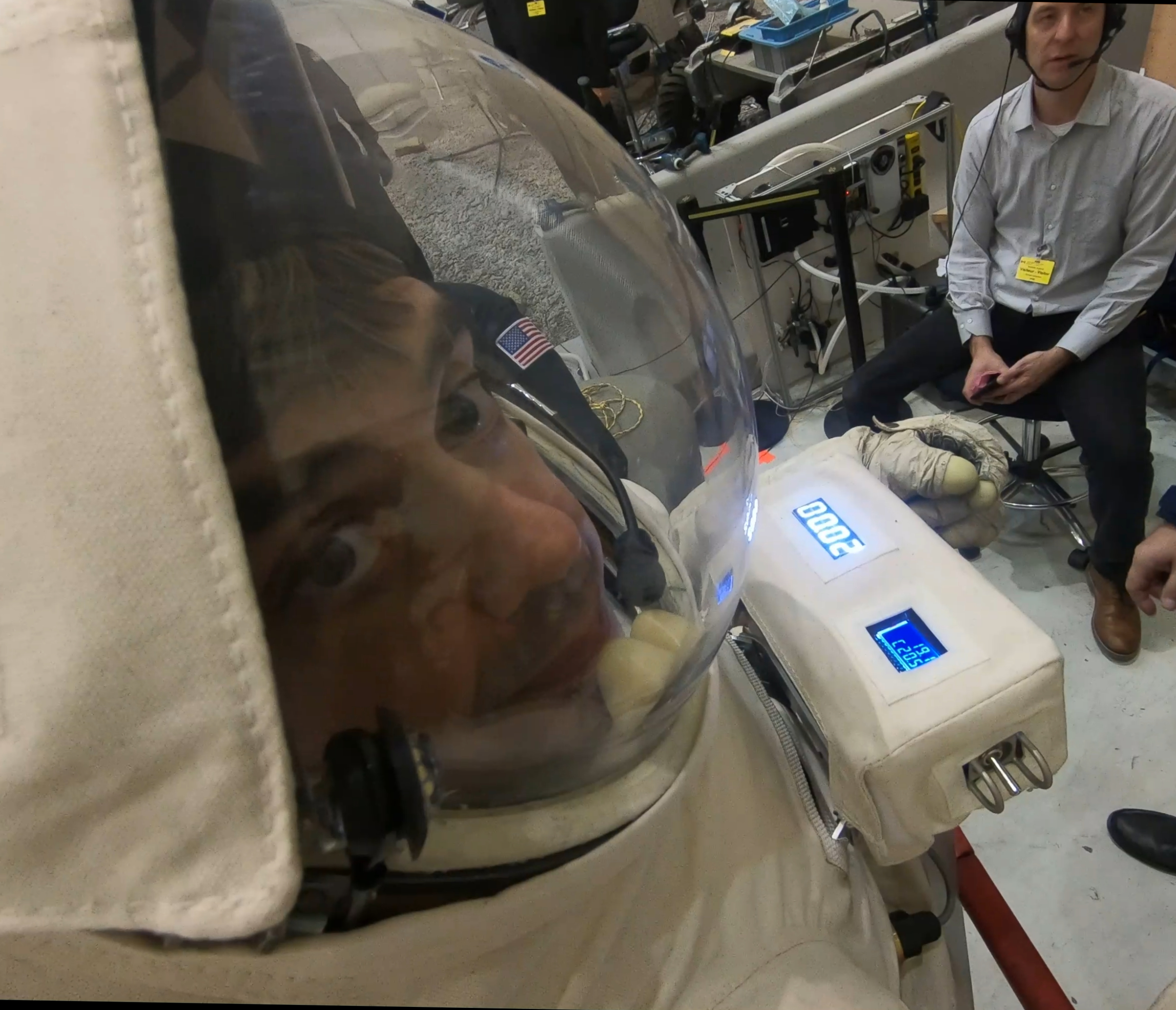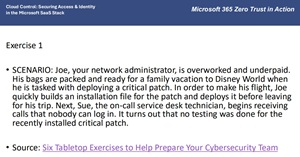In-Depth
Using Tabletop Exercises to Strengthen Microsoft 365 Zero Trust Preparedness
At today's online summit hosted by RedmondMag, titled "Cloud Control: Securing Access and Identity in the Microsoft SaaS Stack," longtime Microsoft MVP and technology author Brien Posey focused on how organizations can move from planning to practice by running cybersecurity tabletop exercises based on real-world Microsoft 365 Zero Trust scenarios.
His session, "Microsoft 365 Zero Trust in Action," demonstrated how tabletop exercises reveal gaps in incident response plans and improve coordination among IT, security, and business teams. The presentation--sponsored by Veeam as part of the three-part summit--is available for on-demand replay for those who couldn't attend live.
 "I tend to think of tabletop exercises as being extremely worthwhile because they reveal a lot about your organization and about what works and what doesn't."
"I tend to think of tabletop exercises as being extremely worthwhile because they reveal a lot about your organization and about what works and what doesn't."
Brien Posey, Microsoft MVP
Posey explained that tabletop exercises are the practical side of Zero Trust readiness, giving organizations a structured way to simulate security incidents, assess response procedures, and refine communication. Below are highlights from his demonstration of how to plan and conduct effective tabletop drills.
Why Tabletop Exercises Matter
 [Click on image for larger view.] An Example Tabletop Exercise (source: Brien Posey).
[Click on image for larger view.] An Example Tabletop Exercise (source: Brien Posey).
Tabletop exercises, Posey said, test internal processes under realistic but controlled conditions. He explained, "For example, in Microsoft 365 we have attack simulation training, but tabletop exercises tend to focus more on the IT staff and the executive staff, rather than on the end users." He added that "the document that I referred to a moment ago suggests that each one of these exercises that I'm about to go through should take about 15 minutes. Now in my mind, I tend to think that those exercises should go on for a lot longer than 15 minutes. I would say 15 minutes is the absolute bare minimum."
He noted that organizations can adapt the Six Tabletop Exercises to Help Prepare Your Cybersecurity Team -- linked to in Microsoft documentation -- or build custom ones aligned to their own risks. Some organizations even turn them into full-day offsite retreats covering a few complex questions per session. "Now it's also worth noting that even though Microsoft references this document that provides these exercises, you don't have to use them as is. You can build on them. You can modify them to better fit your organization. You can add injections," he said.
Sample Scenarios and Discussion Frameworks
Posey walked through example exercises involving patch deployment failures, insider data leaks, ransomware events during natural disasters, and compromised third-party cloud services. Each scenario includes questions for participants to discuss--such as escalation paths, response coordination, and notification procedures.
Designing and Running an Effective Tabletop
Posey emphasized structure and preparation. "So the first best practice is start with why you're doing the exercise," he said. Establish two or three clear, measurable objectives--such as testing a ransomware plan or evaluating how well teams communicate during a breach. He then recommended tailoring each scenario to the organization's actual IT environment and threat landscape. "It's also good to avoid anything that's super overly technical or that even falls into the realm of something that you would see coming out of Hollywood," he cautioned. "So remember, realistic details build engagement and credibility."
Exercises should be divided into phases: setup, injects, response, escalation, and recovery. Keeping the session time-bound--typically 90 minutes to three hours--helps maintain focus. "As I said, most tabletop exercises run best in an hour and a half to three hours," Posey said.
People, Roles, and Realism
Cross-functional participation, he said, is critical. That includes not only IT and security but also legal, communications, and HR--anyone who would play a part in a real incident. "So the facilitator's job is to ensure that everything flows properly and that everything's done fairly. They're the person who's responsible for keeping the discussions on track, for encouraging people who are maybe sitting in the back and being quiet to speak up and give their opinions, and for pushing for specific answers," Posey said.
Finally, Posey recommended documenting every decision, gap, and idea that emerges during the exercise and using that information to refine incident response plans, communication protocols, and training. He explained that at the end of a simulation, "everybody who is involved in it, no matter what the role was, has a chance to talk. They talk about what worked, what didn't work, what they would have done differently, and what changes they would like to see in the plan going forward."
And More
Posey concluded that tabletop exercises, while sometimes time-consuming, pay dividends by strengthening technical readiness and organizational alignment around Zero Trust principles. He also highlighted Microsoft's guidance on combining tabletop exercises with ISO risk frameworks to continuously modernize security posture.
While replays are convenient and informative -- especially up-to-date sessions that just concluded -- attending live events offers advantages, including the ability to ask specific implementation questions and receive guidance in real time (not to mention receive free prizes, in this instance an XBox Series X Console provided by the sponsor, Veeam, which also presented a session in the summit). With that in mind, here are some upcoming online webcasts from RedmondMag:
About the Author
David Ramel is an editor and writer at Converge 360.